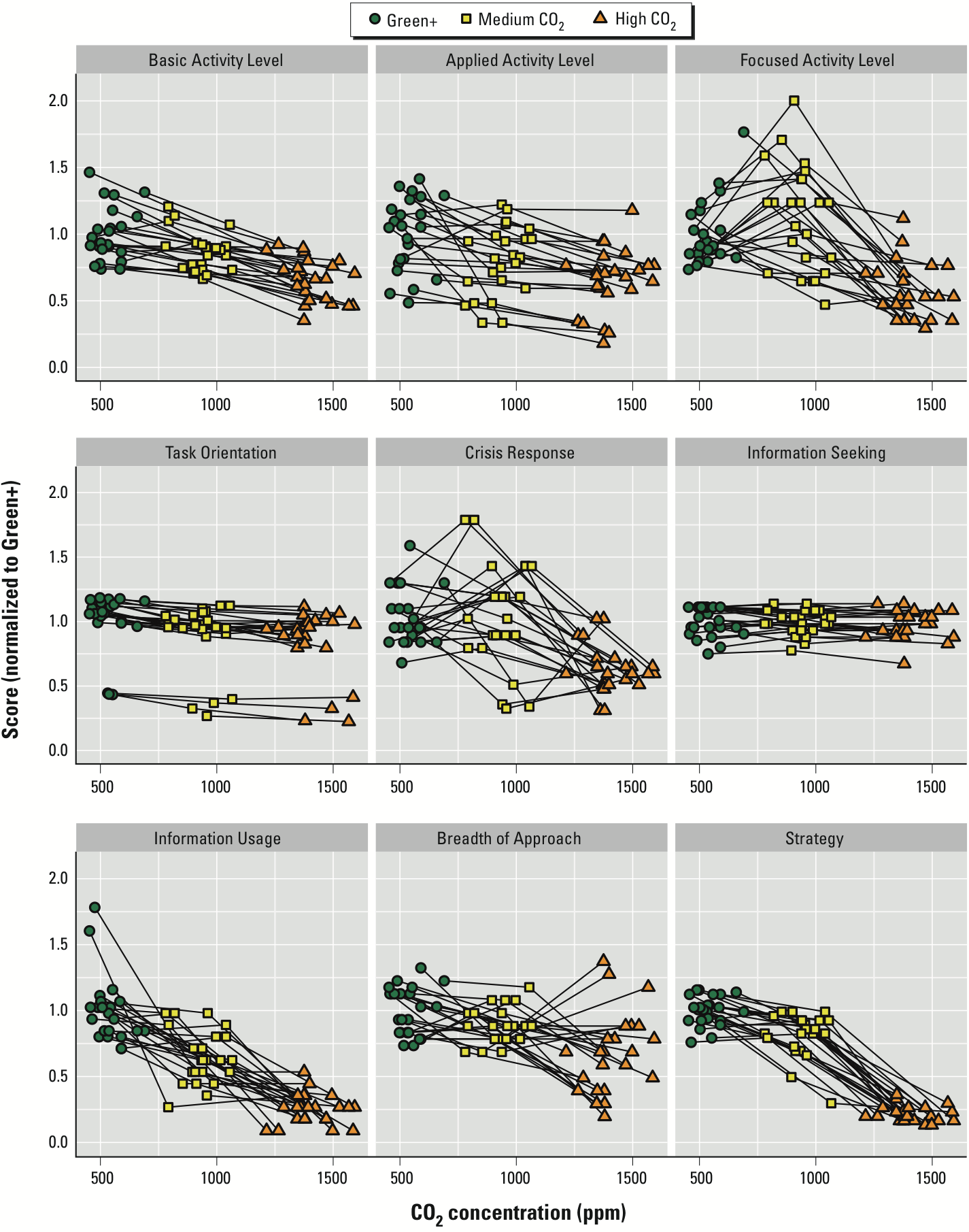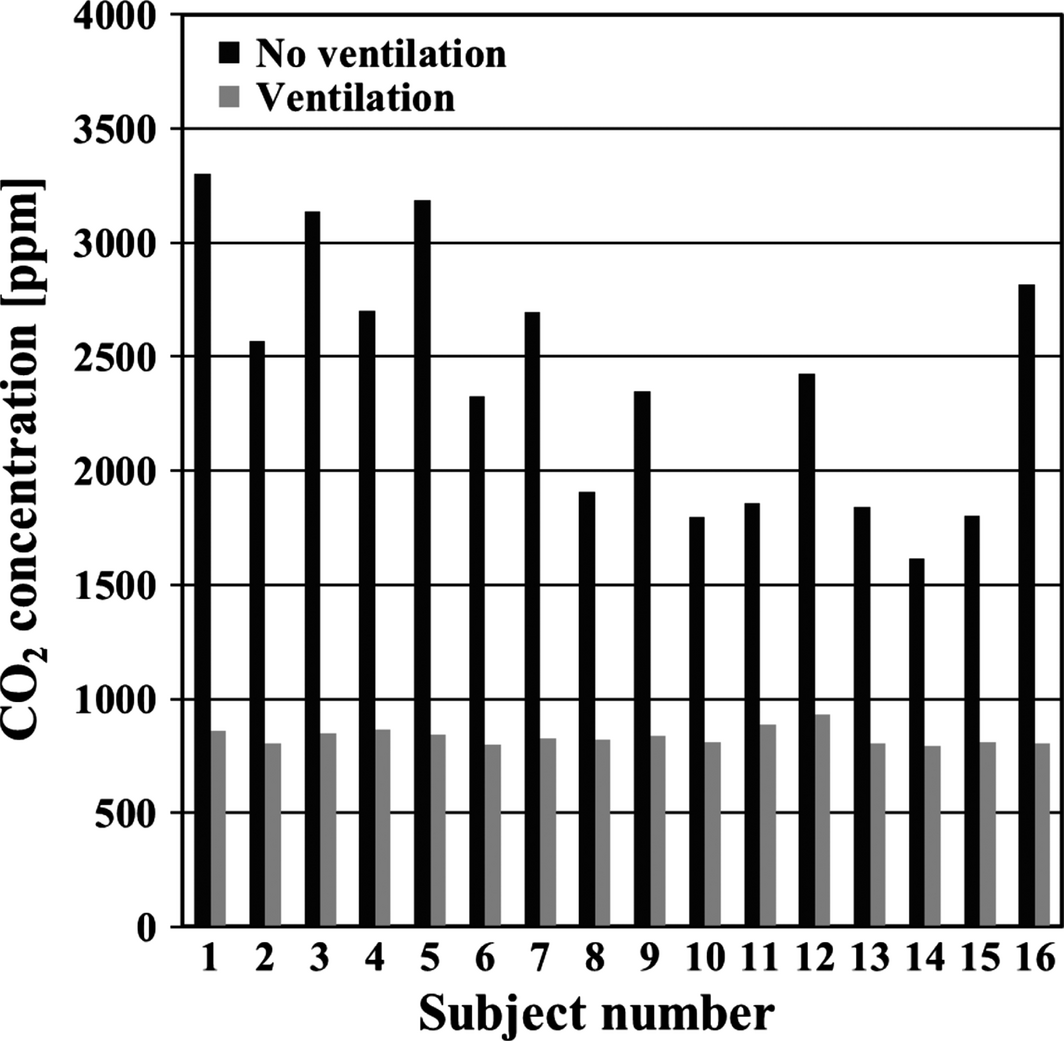Perform (and sleep) Better in Smart Buildings
Background
During the winter, I typically sleep with my windows closed and heat on, and I’m sure this is not uncommon in the Pacific Northwest. I also like to keep the door closed to retain the room’s heat. Maybe you’ve noticed that, in this state, a room can get stuffy quickly. And, if you manage to sleep the night through, perhaps you’ve experienced that groggy and unrested feeling in the morning.
This daily struggle caused me to launch my own experiment at home with a few wireless environmental sensors. For this impromptu Smart Home upgrade, I placed a carbon dioxide (CO2) sensor in my bedroom just before turning in and I let it run overnight. The data from this sensor (and a few others I was evaluating) was being streamed to a dashboard on my computer which I checked in the morning. Here’s what I noticed.
 These bubbles are only refreshing in your soda.
These bubbles are only refreshing in your soda.
Guinea Pig
First, it was tough to wake up that morning. I started this self-inflicted experiment with my room vented to the outdoors for about 20 minutes prior to sleeping. This ensured that the CO2 concentration was near outdoor levels – about 350-450 parts per million (ppm). In the morning, I opened the door and window again to allow full ventilation. After waking slowly, with the aid of some strong coffee, I checked the sensor dashboard. The results, plotted below, show that nighttime CO2 levels in my room stabilized at almost 1500 ppm.
 Measured CO2 levels in my bedroom overnight. Note when the windows and doors are closed and opened.
Measured CO2 levels in my bedroom overnight. Note when the windows and doors are closed and opened.
My curiosity was piqued. Could this concentration of CO2 be causing my morning struggle, or was it simply stress, late-night YouTube sessions, or plain laziness? I jumped online to do some research and found several studies on CO2 as an indoor air pollutant. Two stood out: a study performed by U. Satish, et al., in 2012 and another by J.G. Allen, et al., published in 2016. Both addressed human cognitive function in relation to CO2 concentrations.
Office Drone
These studies were aimed at workers in office environments, rather than those sleeping at home, but the results indicated that high CO2 concentrations would indeed effect human mental function - negatively. The report by Satish indicated that, relative to a 600 ppm baseline, at just 1000 ppm of CO2, decision-making performance was moderately affected. At 2500 ppm, decision making performance took a large hit. The study by Allen found even more dramatic effects. It exposed subjects to three tiers of CO2 concentrations: 550 ppm (day one), 945 ppm (day two), and 1400 ppm (day three). The subjects were placed in an office environment with a regulated atmosphere and given a variety of tasks to assess various aspects of their cognitive functions on each day. On average, and relative to day one, cognitive function scores decreased by 15% on day two and by 50% on day three. The gist of the study by Allen was that increased ventilation and the use low-emitting building material correlates to increased cognitive function. This is due to reduced concentrations of indoor air pollutants (CO2 and volatile organic compounds or VOCs). The study also hints that the advantages of “green” building materials and active ventilation systems outweigh their increased costs – i.e. healthier, happier employees are more productive (and more pleasant) and take less sick leave. Now, what about sleep?
 Allen study results show average reduction in cognitive performance with increase in CO2 concentrations.
Allen study results show average reduction in cognitive performance with increase in CO2 concentrations.
Bed Ridden
I also discovered a 2015 study by P. Strøm-Tejsen, et al., which assessed the effects of air quality on sleep and next-day performance. The paper detailed that, especially in cold regions, and in bedrooms with doors closed for privacy and windows closed for warmth, CO2 concentrations regularly exceeded 2500 ppm. Findings by Allen, previously mentioned, indicate that this would dramatically reduce cognitive function. And, in fact, Strøm-Tejsen found that improved ventilation lead to reports of better sleep and next-day performance by the test subjects. Another study in 2007 by J.J. Fraigne, et al., supports this. It measured the effect of CO2 on sleep in cats and found that high concentrations of CO2 reduced REM and NREM sleep duration and frequency. This indicates that both waking mental performance and sleep quality are affected by peak CO2 levels that are easily attainable in these environments.
 Strøm-Tejsen measured CO2 in bedrooms with and without ventilation. It’s dramatic.
Strøm-Tejsen measured CO2 in bedrooms with and without ventilation. It’s dramatic.
Sensing Solutions
One personal experiment and four research papers later, I had a pretty good idea that CO2 concentrations can get high enough in a building to affect people in a tangible way. These studies are important because we spend most of our lives indoors and there are clear benefits to improving that environment. The advantages include healthy, happy, and productive people coupled with more efficient energy use. Excellent ventilation is key, but it is not economically viable, or even humanly comfortable, to run building HVAC at maximum capacity, or to keep all your windows open. One way to strike a balance, is by applying enough ventilation to keep CO2 and other pollutant concentrations at levels that have little perceptible effect on cognition and health. The practical way to assess one’s success at this is to actively measure air quality throughout one's building. And, this is a real possibility in the IoT era. Wireless air quality sensors allow building owners to monitor these metrics in a cost-effective and easily deployable way. IoT systems like this protect our health, happiness, and wallets at the same time and this is arguably the essence of a “smart world”. This concept is also adaptable to any type of indoor environment. Smart buildings have the potential to keep you alert in your staff meeting, intellectually sharp in your university lecture, less dependent on caffeine (and other stimulants) or, just better prepared for that morning alarm.
References
https://ehp.niehs.nih.gov/1104789/
https://ehp.niehs.nih.gov/15-10037/
http://onlinelibrary.wiley.com/doi/10.1111/ina.12254/full
http://www.fasebj.org/cgi/content/meeting_abstract/21/6/A1295-a